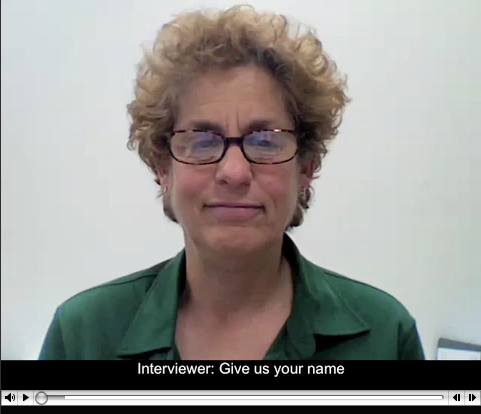Lisa
Like Debleena and Cornelia, Lisa positions herself as a cultural outsider inhabiting a thirdspace in the European community in which she lived. She notes that she could get by with English for many daily activities, but to interact with neighbors and to have friends in Amsterdam, one needed to speak the language. She was not part of this community at first; she views herself on the periphery of Dutch society because of the language barrier and describes how her children facilitated her language learning. She would read children’s books aloud to them in her heavily accented Dutch and, in this way, began at least to learn a child-like version of the language. Lisa positions herself as different in other ways from those with whom she lived and talks about how some of her feminist leanings did not always translate well with the mothers of her daughters’ classmates. Her suggestion that the little boy, Jip, for example, in Jip en Janneke, should do the things Janneke, the little girl, was doing and vice versa fell on deaf ears. During her literacy narrative, however, she is able to disclose these feelings because her narrative was collected in an interview setting where she was speaking with a fellow graduate student at her university and understands her audience as similar to herself: she’s primarily addressing her colleagues through the DALN and talks about herself as a “non-Dutch mother.” She describes, for example, the Dutch children’s books for an audience that might not have experience with them.
When Lisa steps outside her role as mother and neighbor, however, we are treated to another dimension of her literate life in Amsterdam as a professional editor and translator. Here she moves from her kinderlijke Dutch to knowing the language well enough that she can provide a professional service for clients who need their spoken English edited before it can be published. Thus her growing competency in the language and eventual fluency, documented with a diploma she displays in her video, allowed her to step fully into a culture which she notes “wasn’t [her] own.” Throughout her videoed interview, she acknowledges that she struggled to learn the language, “living a Dutch life, being this non-Dutch mother, but surrounded by Dutch family and culture.” She also locates herself as separate from her audience in defining herself through her international and translingual experiences in Amsterdam, and she explains as well that she sees herself as someone who identifies with the Korean university students she teaches in the United States, who are also trying to fit into a new culture with a new language.



